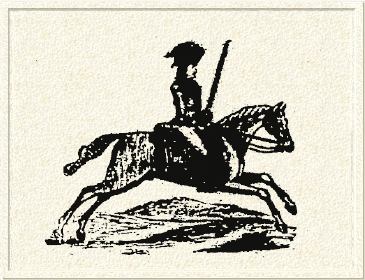|
|
Skewball

|
|
 |
|
|

Skewball was a racehorse. He was bred by Francis, (2nd) Earl of Godolphin, at his stud, Babraham, Cambridgeshire, and foaled out at Sir John Dutton's (owner of his dam) stud at Sherborne in 1741. His name, as recorded in the General Studbook, was Skewball ("Squball" in Lord Godolphin's studbook), by the Godolphin Arabian, and out of a Whitefoot mare called Bandy (in Godolphin's own studbook). Since he was Godolphin's foal, apparently by prior arrangement with Dutton, with whom he had several such similar agreements, he went back to Babraham in 1743 where he remained until he was sold to a Mr. Blake in 1747 at the age of 6. That same year he passed into the hands of Sir Harry Harpur of Derbyshire, for whom he won two races that year. The General Stud book notes that Skewball was sent to Ireland, as were his half brother Ajaz (1747, by Second) and sister Smirking Nan (1748, by Marksman).
Samuel Sidney [The Book of the Horse, 1875, repr. ed. Bonanza Books, 1985] stated Skewball "...won a great number of plates and prizes in England, and one famous match in Ireland." The Irish turf callendar says he won six races worth £508 in 1752, when he was eleven years old, and was the top earning runner of that year in Ireland. The match became the subject of a ballad, Skewball, which has endured, in varying forms, to the present day. The match celebrated by the ballad is listed in Pond's Racing Calendar of 1752. It was held at the Curragh in Kildare, Ireland, on Saturday, March 28, with each participant putting up 300 guineas. Arthur Marvin (also Marvyn, or Mervin) owned Skewball, who carried 8st. 7lb. His opponent was "Sir Ralph Gore's grey mare," carrying the heavier weight of 9 st. Skewball was a gelding, which explains why he was still running at age eleven; although it was not uncommon for horses to run to ages 9 or 10 during that period, successful stallions were usually retired from the turf to commence their stud careers. He won the 4 mile race in 7 minutes and 51 seconds.
The various versions of the ballad give a corrupted version of Skewball's owner's name at that time: Irvine, Mervin, and, later, Arthur Marvel. Most versions of the song make a point of telling us that Skewball had never raced "in the land" before, or that he was "brought over," which tallies with the information provided by Sidney. The thousands promised to Mr. Mervin by Skewball in the ballad is almost certainly not hyperbole: often in match races, it was not the purse itself that was of significance, although the 600 guineas actually laid down was not an insubstantial sum, but the side bets placed by the owners, often summing into the thousands of pounds.
The grey mare was owned by Sir Ralph Gore, whose family had gained a great deal of land in Ireland with the Protestant Cromwellian invasion (starting in 1650), which probably accounts for the delight in Skewball's win "breaking Sir Gore" in the final lines of this Irish-based broadside. The grey mare, according to Pond's Calendar, was by Victorious, probably either Portmore's Victorious (1725) or Onslow's Victorious (1722). Her name is variously given in the early versions as Miss Sportsley, Miss Portsley. In later versions, she is called Miss Portly or, inexplicably, Griselda [Grizelda, a bay mare of 1752, won four races for Tom Lambert in 1764 at age twelve, making her the top money winner in Ireland that year]. Sir Ralph Gore was a principal breeder in Ireland during this period, and did, in fact, own a famous racemare named Sportley (by Spinner - mare by Somerset Diamond) who was bred by Fulk Greville in 1740 and won a large number of races at Newmarket and elsewhere in England. In 1748 she was sold to Charles Wilson, who later resold her to Gore "...to go to Ireland, in which place she won two King's Plates, two prices of 60 guineas each, and one of 50 guineas, beating most of the horses &c. in high form there." She was later sold to Clotworthy Skeffington, Viscount Masserene and Baron of Lough-Neagh. It may be that the ballad-writers deliberately or confusedly substituted her name into the Skewball story.
--Patricia Erigero
|
|
|
|

